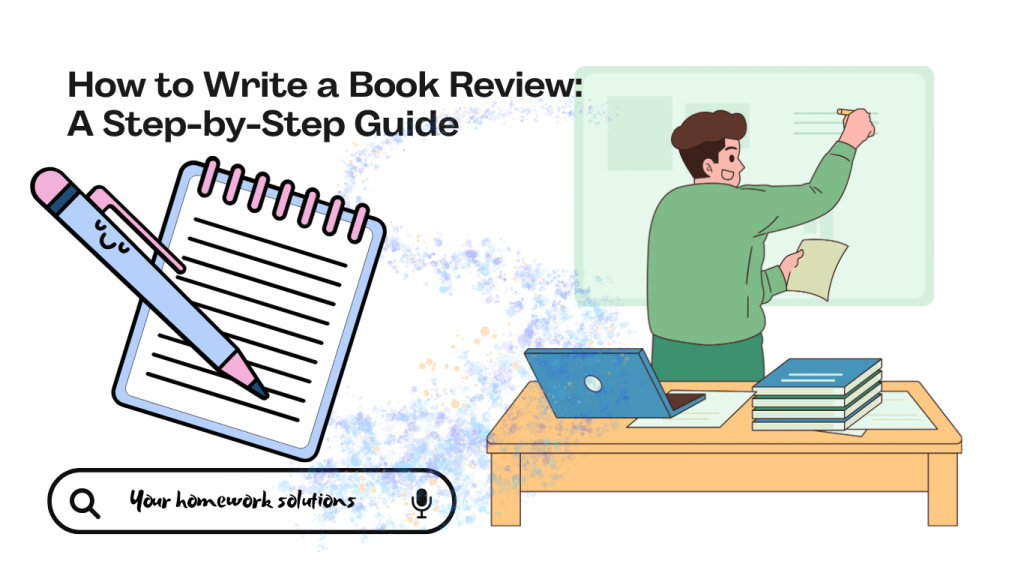When learning how to write a book review, it’s crucial to move beyond mere plot summaries and delve into a critical examination of the text’s themes, style, and intended audience. A well-crafted review provides insight into the author’s skill in character development and argument construction, evaluates the coherence of the narrative or ideas, and considers how effectively the work engages readers. By dissecting both strengths and weaknesses with clear, evidence-based observations, reviewers offer an informed perspective that helps others decide if the book aligns with their personal or academic interests.
Table of Contents
- Introduction: Why Book Reviews Matter
- Step 1: Craft a Strong Title and Introduction
- Step 2: Provide Background on the Book and Author
- Step 3: Summarize the Book Concisely
- Step 4: Analyze Key Elements
- Step 5: Discuss Strengths and Weaknesses
- Step 6: Offer Your Personal Opinion
- Step 7: Conclude and Rate the Book
- Example Book Review
- SEO Tips for Book Reviews
- Conclusion & Call to Action
- References

Introduction: Why Book Reviews Matter
Book reviews are more than just summaries—they’re critical evaluations that help readers determine whether to pick up a particular title. They also play a significant role in the literary community by offering fresh perspectives and encouraging discussion (Purdue Online Writing Lab [OWL], 2021). Whether you’re a seasoned critic or a beginner, learning how to write a balanced, informative review can boost your credibility and engage your audience.
Step 1: Craft a Strong Title and Introduction
Your review’s title should be catchy and include keywords, while your introduction must hook readers. According to the University of North Carolina at Chapel Hill Writing Center (n.d.), a compelling opening can outline your main argument or emphasize what makes the book noteworthy.
Example Title:
“Mastering the Art of Book Reviews: A Practical Guide for New Critics”
Step 2: Provide Background on the Book and Author
Right after your introduction:
- Mention the Book Title and Author
- Date of Publication and Publisher
- Author’s Background or Achievements
This context sets the stage for your critique and helps readers understand the significance of the work (The Writing Center, n.d.).
Step 3: Summarize the Book Concisely
Offer a clear but brief overview:
- Fiction: Focus on the main conflict, setting, and protagonist.
- Non-Fiction: Highlight the central thesis, methodology, or main points.
Avoid major spoilers; your summary should pique interest rather than ruin the reading experience.
Step 4: Analyze Key Elements
This is where you dive into literary or thematic analysis when writing a book review:
- Writing Style: Is it formal, casual, or lyrical?
- Themes and Tone: What big ideas does the author explore?
- Character Development (Fiction): Are characters multidimensional and evolving?
- Structure (Non-Fiction): Is the argument logical and well-supported?
According to Purdue OWL (2021), this analytical section demonstrates your critical thinking skills and shows readers that you’ve engaged deeply with the text.
Step 5: Discuss Strengths and Weaknesses
A balanced review covers both positives and negatives:
- Strengths: Could be well-rounded characters, compelling arguments, or a unique writing style.
- Weaknesses: Might include rushed pacing, lack of evidence, or shallow character arcs.
This balance makes your review more credible (The Writing Center, n.d.).
Step 6: Offer Your Personal Opinion
Your personal voice is a key element:
- Emotional Response: Did the book spark joy, sadness, or excitement?
- Relevance: How does it relate to current events or broader social issues?
- Target Audience: Who would enjoy or benefit from reading this book?
Sharing your viewpoint connects you with your readers and helps them decide if the book aligns with their tastes.
Step 7: Conclude and Rate the Book
Wrap up your main points and give a clear verdict:
- Overall Impression: Summarize your key insights.
- Rating: Stars, points, or another simple metric (optional).
- Recommendation: State whether you recommend the book and to whom.
Example of how to write a book Review
Below is a brief example illustrating the steps above. Note how the format remains concise yet informative.
Book Title and Author
- Title: The Great Gatsby
- Author: F. Scott Fitzgerald
- Publication Date: 1925 (Charles Scribner’s Sons)
Summary
The Great Gatsby follows Nick Carraway, a young man who moves to West Egg, Long Island, during the Roaring Twenties. He becomes entangled in the lavish world of Jay Gatsby, a mysterious millionaire with a passionate longing for the past.
Analysis
- Writing Style: Fitzgerald’s prose is lyrical and evocative, perfectly capturing the frenetic energy and underlying emptiness of the Jazz Age.
- Themes: The novel delves into the American Dream, class disparities, and the destructive power of idealized love.
- Character Development: Jay Gatsby, Daisy Buchanan, and Nick Carraway each reveal deeper layers as the story progresses, reflecting the social and moral decay masked by wealth.
Strengths and Weaknesses
- Strengths: The Great Gatsby is lauded for its rich symbolism and timeless exploration of ambition and disillusionment.
- Weaknesses: Some modern readers may find the story’s pacing slow, especially compared to contemporary novels.
Personal Opinion
I found The Great Gatsby to be both captivating and haunting, offering insights into the fleeting nature of success. It’s an excellent choice for anyone interested in American literature or historical fiction set in the Roaring Twenties.
Conclusion and Rating
Overall, I give The Great Gatsby a 4.5 out of 5 stars for its memorable characters, poetic style, and enduring themes.
SEO Tips for Book Reviews
- Targeted Keywords: Use phrases like “How to write a book review” and “Book review example.”
- Headers & Subheaders: Break up content to enhance readability.
- Internal & External Links: Link to related reviews on your site or credible external resources.
- Meta Description & Tags: Craft a brief, keyword-rich meta description (~155 characters).
- Mobile-Friendly Design: Google prioritizes mobile-optimized sites.
- Use Alt Text for Images: Include descriptive alt text for book covers and author photos.
Conclusion
In conclusion, understanding how to write a book review involves a balanced approach that merges thoughtful analysis of a book’s strengths and weaknesses with a concise overview of its key elements. By delving into themes, narrative structure, and authorial intent, reviewers can offer valuable insights that help prospective readers decide whether a book resonates with their interests and expectations. Writing an effective book review involves critical reading, balanced evaluation, and clear, engaging writing (The Writing Center, n.d.). By following the steps outlined in this guide—and taking inspiration from the example provided—you’ll create reviews that are both insightful for readers and beneficial for your blog’s SEO.
Ready to Get Started?
- Choose a book you’re passionate about.
- Outline your key points using the framework in this article.
- Combine thoughtful analysis with an authentic personal touch.
If you found this post helpful, feel free to share it with other book enthusiasts and aspiring reviewers!
References
- Purdue Online Writing Lab. (2021). Writing a Book Review. https://owl.purdue.edu/
- The Writing Center. (n.d.). Book Reviews. University of North Carolina at Chapel Hill. https://writingcenter.unc.edu/tips-and-tools/book-reviews/
- University of Toronto. (n.d.). Writing Book Reviews. https://advice.writing.utoronto.ca/types-of-writing/book-review/
We have the best tutors to help with writing book reviews. Click here to order your paper now


